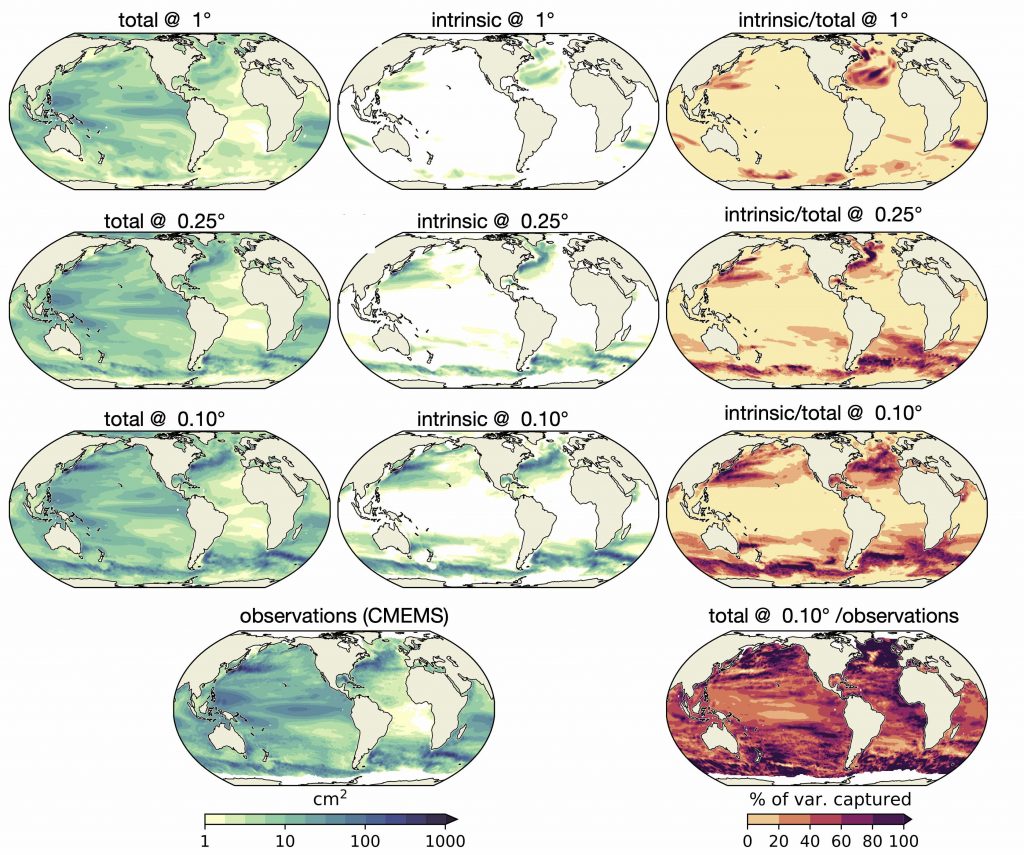Picture: Just beneath the ocean surface. Credit: Emiliano Arano (Pexels).
The atmosphere and ocean are coupled through air-sea interactions. It is well understood that the ocean’s circulation is fueled by the atmosphere, with the winds and storms at the surface of the ocean imparting momentum to the ocean, driving ocean currents and eddies.
To better understand the changing climate we must grasp how the atmosphere and ocean vary at decadal time scales; we refer to variability at those timescales as “low-frequency variability”.
The ocean’s much larger heat capacity acts as “memory” suppressing the atmosphere’s “high-frequency variability” (over time scales of weeks) while producing oceanic motions that vary over longer time scales. This paradigm aims to explain how low-frequency variability emerges in the ocean. But, recently, this paradigm has been challenged.
CLEx researchers Navid Constantinou and Andy Hogg set out to ask the following questions:

- Can the ocean’s intrinsic dynamics alone lead to large-scale patterns of upper-ocean heat flux that vary at decadal time scales? And, if so, are these ocean-generated patterns of upper-ocean heat flux large enough to potentially feedback into the atmosphere and affect the climate?
The researchers used output from a global ocean-sea ice model to answer this question. Firstly, they used two different forcing schemes to disentangle the ocean’s intrinsic low-frequency response from the low-frequency response that results directly as a consequence of the atmospheric forcing. They further analysed output from models at three different horizontal resolutions to assess the effect of resolving versus parametrising the eddies.
The researchers found that models with atmospheres sitting on top of oceans that resolve rather than parametrize eddies produce:
- much more variance of upper-ocean heat content at decadal time scales, and
- with very different spatial patterns that
- vary at longer timescales.
The researchers found through this process that an ocean that resolves eddies shows upper-ocean heat content patterns that vary at time scales that seem to match those of the various climate modes of variability (El Nino, Interdecadal Pacific Oscillation, North Atlantic Oscillation, etc). This raises the follow-up question: could ocean eddies somehow be responsible for triggering these climate modes of variability?
- Paper: Constantinou, N. C. and Hogg, A. McC. (2021) Intrinsic oceanic decadal variability of upper-ocean heat content. J. Climate, 34 (15), 6175-6189. doi:10.1175/JCLI-D-20-0962.1
- Paper Repository (including datasets and Jupyter notebooks): github.com/navidcy/IntrinsicOceanicLFVariabilityUOHC
